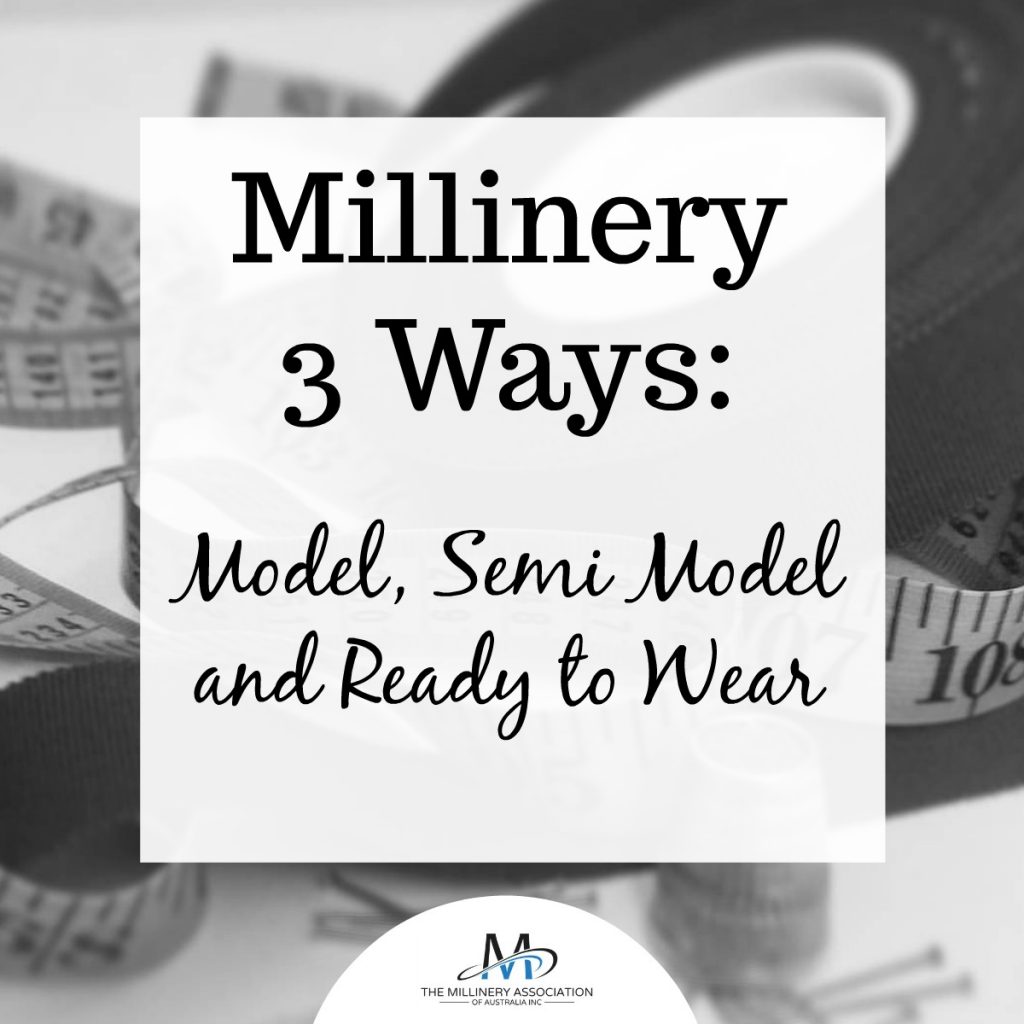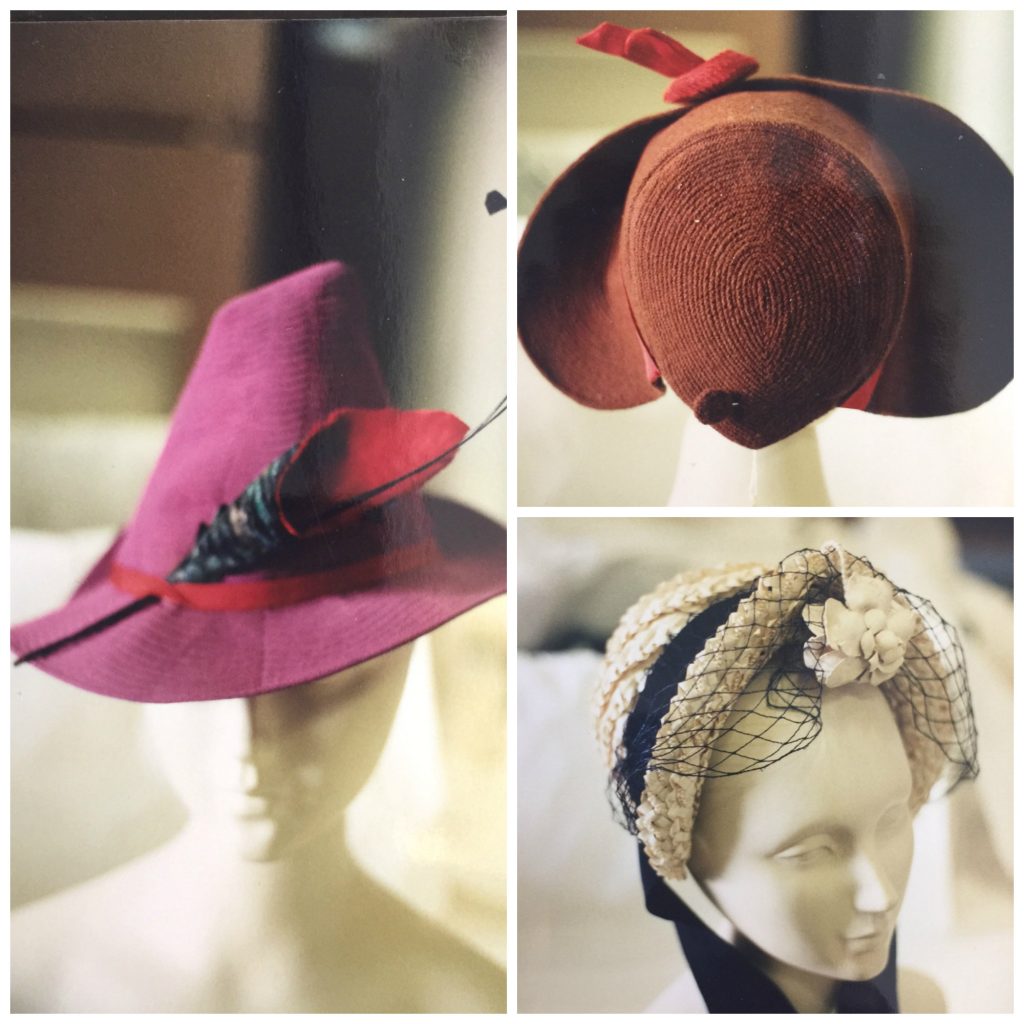By Belinda Osborne – Peacock Millinery
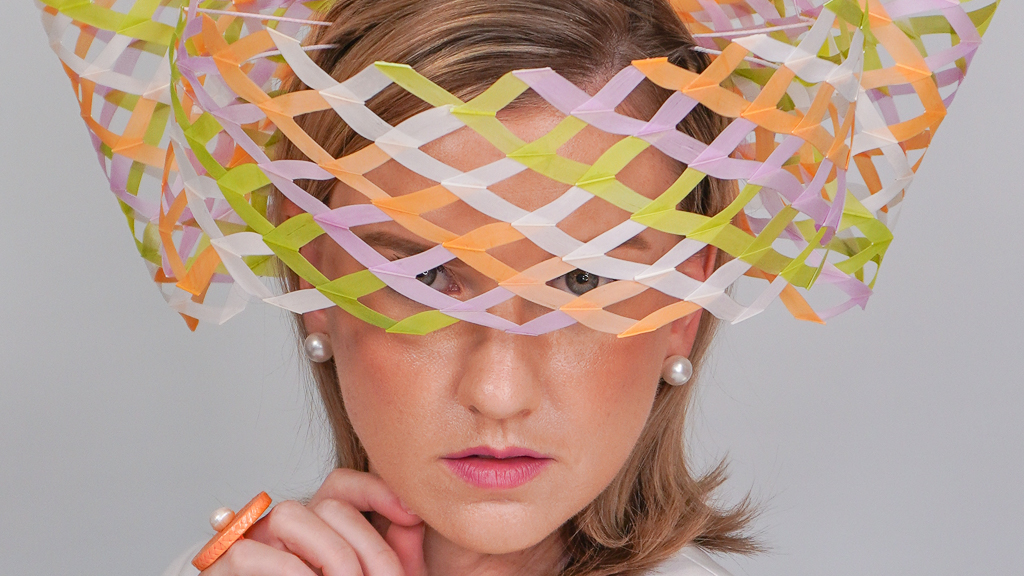
Look in the window late at night (not in a creepy way) during peak hat season and you will see by the glow of a sewing light, head down, hands stitching away, a milliner working tirelessly putting finishing touches on the latest headwear delights. As a milliner, I know the gig all too well. It is the time of year where we milliners and hatmakers alike, emerge from our studios, tired, hands worn, with the very best in millinery fashion for our clients.
So how on earth is there time to get inspired to design and make a piece for a competition!? Let alone, a competition such as the prestigious Myer Fashions on the Field Millinery Award. With its rather daunting list of entrant requirements.
I’m going to share with you how I approach designing and making for competitions, in particular, for both the Myer Millinery Award and the Millinery Australia Design Award, and some tips for entering. Competitions always seem to be right in the middle of the busiest time of the year. As a professional milliner, my client’s always come first as they pay me to do what I love. A competition on the other hand, does not pay me to do what I love. So why do I do it?
Very early on in my career, I realised competitions were an investment of time and effort that is not guaranteed a return or benefit. So, I decided that I would make them benefit me in a way I felt I could justify the time spent. I made my own ‘benefit package’ as such. I began to see competitions as an opportunity to further develop my skills, to push me to innovate and to network with others.
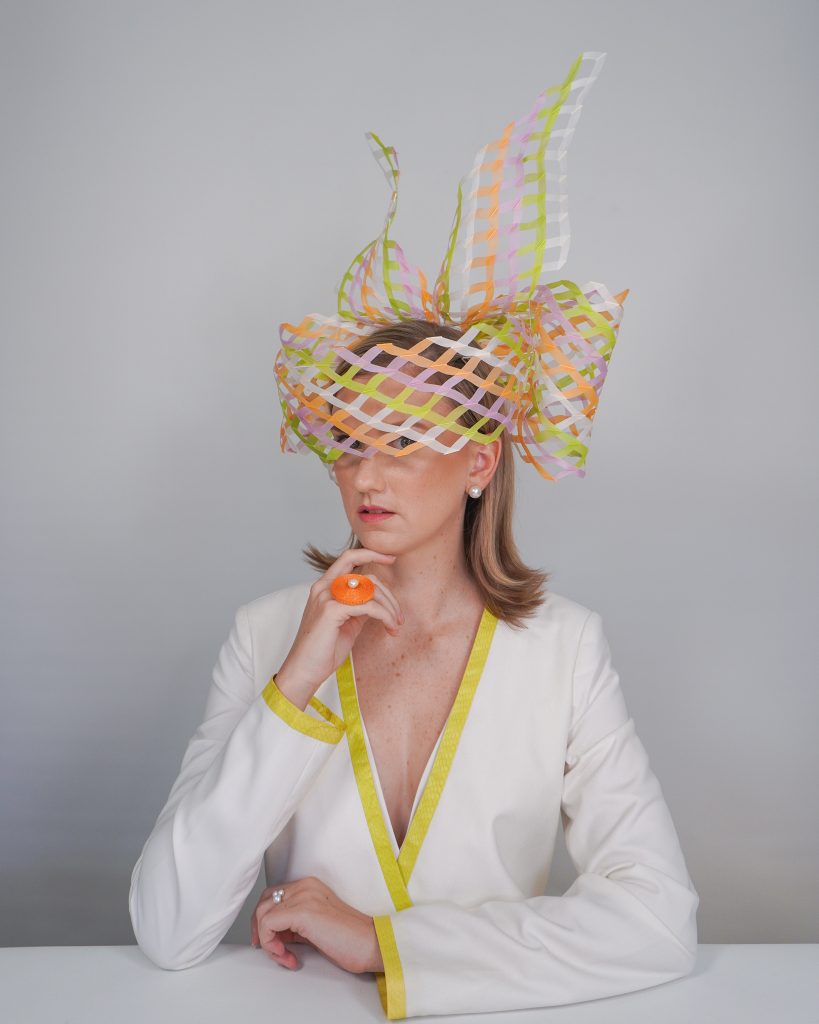
Entering a competition such as the Myer Millinery Award requires time, planning, discipline, and a good understanding of the requirements of the competition. If you have not entered previously, or have yet to delve into the competition’s new digital format, trust me when I say, there is more time invested than you may think. This can also become a black hole of time if you let it. Planning is key!
Firstly, I decide how much time I am willing or able to invest in my entry. How much time really depends on how innovative and creative I want to get with the design, and of course the looming competition deadline. If I want to design something completely new, I need to factor time to experiment and fail (maybe a few times). On top of that, I also need to plan for recording and editing footage for my social media and video diary, updating my portfolio, and of course, photographing my finished entry. I do all of this myself, as this has been part of my ‘benefits package’ and learning journey. I approach a competition the same as I would when I need to choreograph shoots and artwork for marketing. I like a professional clean look, and I have been honing my skills at achieving this over the years.
When I begin to think about designs for any competition, I tend to think backwards. What do I want to see on display or in the images? What is going to make the judges not want to take their eyes off my design and curious to know more? What is the best silhouette that is going to portray this? What do a want to highlight; a technique or maybe to convey a feeling? What is the competition asking of me, and how will I address this requirement in my design?
I will always ask these questions before I begin. As I did for both my winning entries in the 2021 Myer Millinery Award and the 2022 Millinery Australia Design Award. With the Myer Millinery Award, I knew I wanted a statement piece that was new and fresh in its concept, but echoed age-old silhouettes. “A bow…no, a BIG bow!!” and that is how it began, with a sketch of a large bow encircling the model’s head. But it was the way in which I used feathers to create almost a new textile in which formed the bow, that really took my design to the next level. I was working in a new space for millinery and creating a real moment. I have a motto I use in my business, and that’s “making millinery moments.” I apply this when designing. I want to create a moment, a millinery moment. I want my clients to feel it, I want the judges to feel it. Surprise, shock, amaze and awe are your friends in a coveted competition such as the Myer Millinery Award.
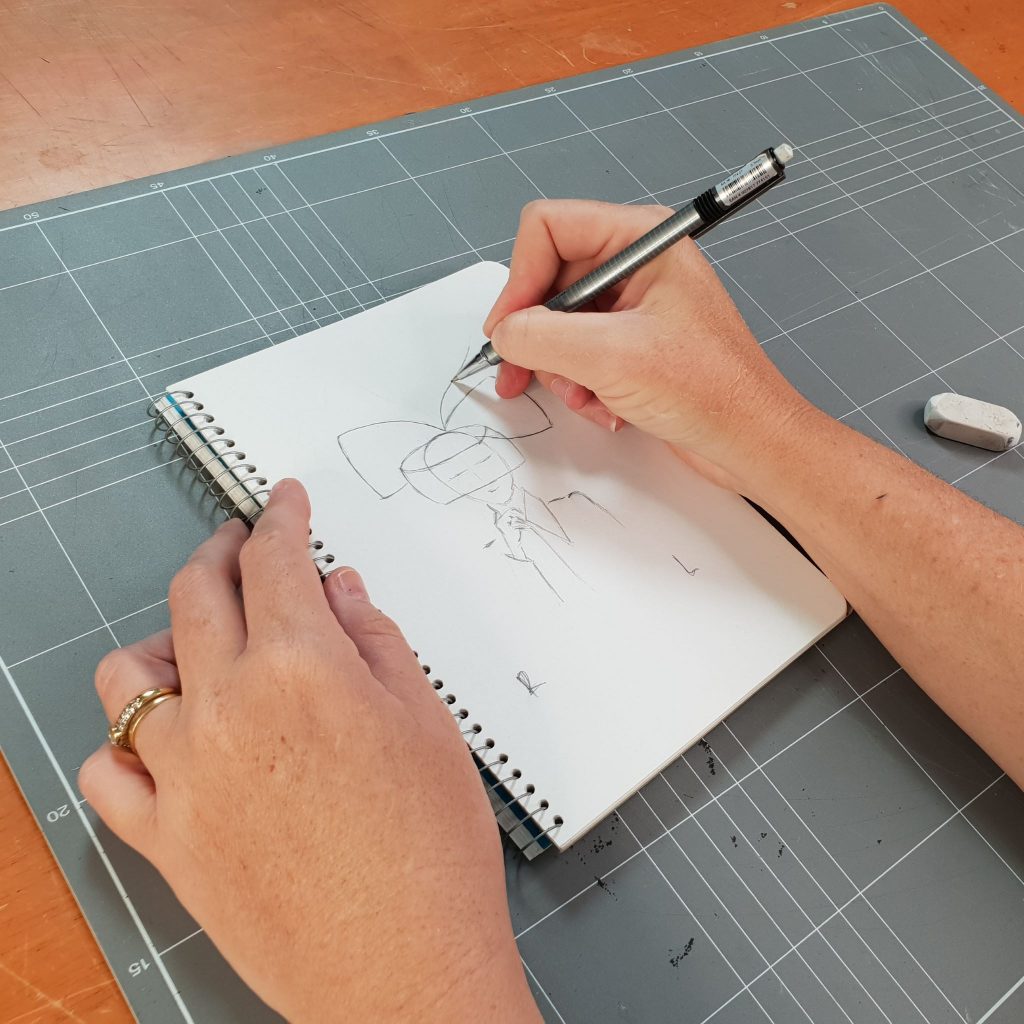
When designing and constricted by a theme, I’m not one for hiding behind a tenuous connection to the theme. I tend to stay very literal, almost in your face about it. For the Millinery Australia Design Award, the 2022 theme of counterbalance resonated with me. I wanted everything about my finished design to appear to counter balance another aspect of the design. In my head I envisaged the silhouette of a yin yang symbol framing a model’s face. As you can see, I started my designing process by thinking backwards again. It is a way that works for me and helps me focus.
Every competition is different. Being able to understand what a competition is asking of you is no different than understanding a client’s need. If you haven’t had much experience in this, then entering competitions can be a great way to get a little more experience. A competition, like a client, may have a list of criteria they need you to meet. With experience you’ll begin to see there is usually one or two criteria that holds more weight than others. When you understand what that is for each competition, you can really begin to hone your entries to the requirements.
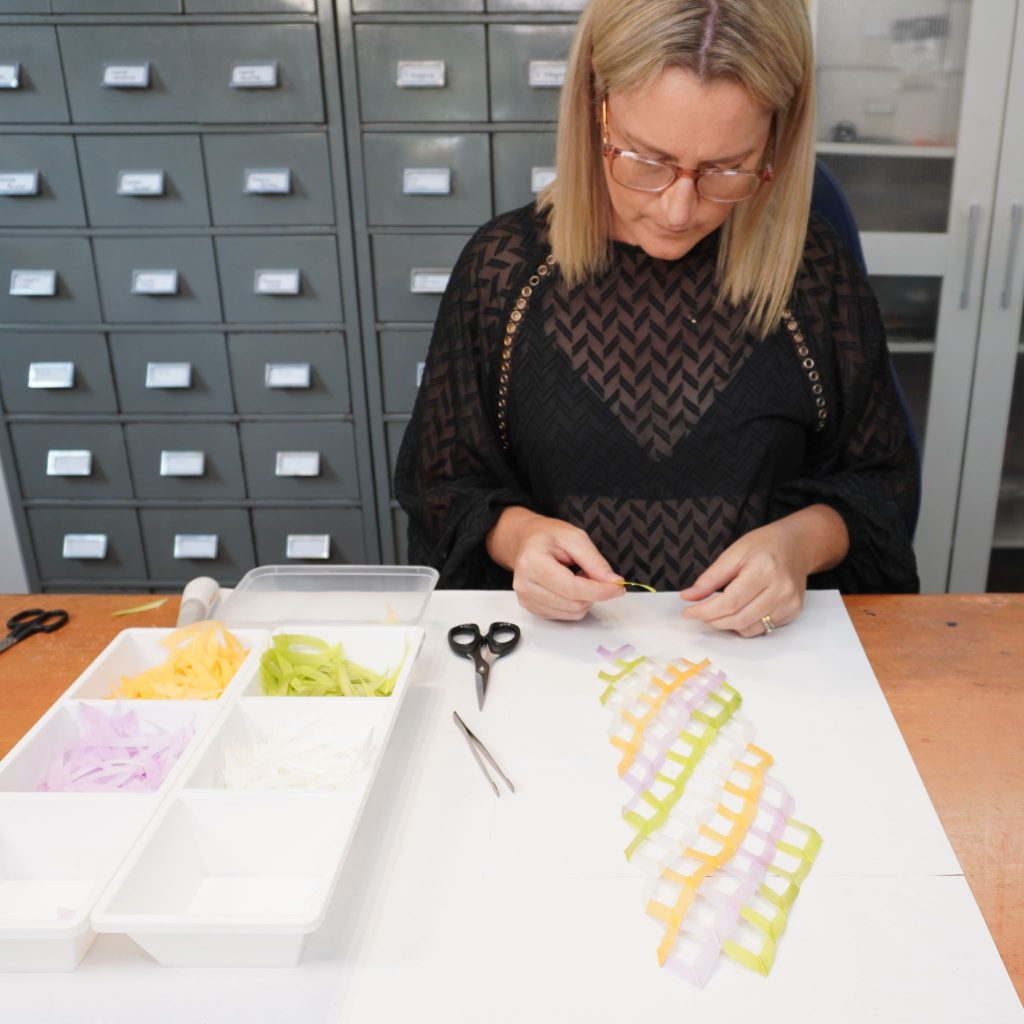
When getting ready to enter your next or first competition, my big tips are:
+ Research. What designs were successful in the past? In what way were they remarkable? Did they take any risks?
+ Understand the requirements. If you are unsure of something, a brief email with your query to the competition organiser is your best option for clarity.
+ Tailor your entry to each competition, but never lose sight of who you are as a designer.
+ Ensure you have your own ‘benefit package.’ That way if the result isn’t a prize, you still benefit from entering i.e. opportunity to hone one’s skills, new images to add to portfolio and social media, building contacts and networking etc. It can be what you make it.
Remember, it’s not about winning or losing, but how you play the game. I’ve always played to have fun.
For more great blogs from our guest blogger Belinda, head to her blog page ‘The Milliner Life’ www.peacockmillinery.com.au/blog
Visit Belinda’s Instagram page at www.instagram.com/peacockmillinery

